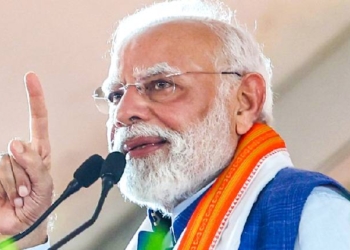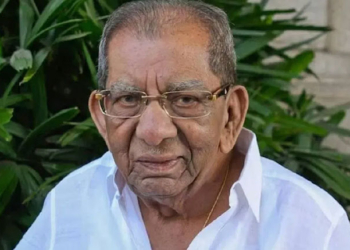New Delhi: There is nothing to panic over the rising number cases of Covid-19 in India, likely driven by JN.1 sub-variant of Omiron, as the infections remain mild, said health experts on Wednesday.
On Wednesday, India recorded 2,311 cases with Kerala reporting highest active cases (2,041).
Although significantly less compared to the global scenario, the last two weeks has seen “steep rise in active Covid cases from 115 on Dec 6 to 614”, Union Health Secretary Sudhansh Pant informed during a high-level meeting chaired to review the Covid-19 situation in India on Wednesday.
Pant noted that 92.8 per cent of the cases are home isolated, indicating mild illness.
He added that there is also no increase in hospitalisation rates, and “Covid-19 is an incidental finding” among people hospitalised due to other medical conditions.
JN.1 is a sub-lineage of the BA.2.86 Omicron variant and was first detected in Luxembourg in August, before spreading to other countries.
BA.2.86, also known as the “Pirola” variant, was first detected in Denmark in July.
About 21 cases of JN.1 have reportedly been recorded from the country, majorly from Kerala (1), Maharashtra (1) and Goa (19), raising concerns of a new wave of Covid.
“Yes, there has been a marginal rise in Covid cases since the last few days. We are seeing about 2-3 Covid positives in outpatient clinics every day for two or three days,” Dr. Pramod V. Satya, Consultant – Internal Medicine, Manipal Hospital Millers Road, told IANS.
“But all the Covid cases we’ve seen are very mild. So, I don’t think there will be another big wave, there may be an isolated few cases. At the most, it may be like the Omicron variant where we had quite a large number of cases but they were all very less severe,” the doctor said.
Dr. Satya said that Covid comes as just any other influenza like illness with fever, cough, throat pain, and body pain. It is very difficult to differentiate whether it’s influenza or a Covid, but in most cases, influenza is more severe than Covid.
While the variant is new for India, it is already prominent reportedly in 38 countries.
Due to its rapid spread, the World Health Organization (WHO) on Tuesday, classified it as a separate variant of interest (VOI), from the parent lineage BA.2.86. It was previously classified as VOI as part of BA.2.86 sublineages.
The WHO said JN.1 could increase the burden of respiratory infections in many countries.
“There is nothing to panic as it remains only a Variant of Interest (VoI) and not Variant of Concern (VoC),” said Dr Ishwar Gilada, Consultant in Infectious Diseases Unison Medicare and Research Centre, Mumbai.
“Until it becomes a variant of concern, we need not worry as a public health hazard,” he added.
According to experts, JN.1 contains an extra spike mutation — L455S mutation, which has immune-evasion properties.
“The JN.1 is not merely a generic variant; it represents a distinct sub-variant of the Omicron strain, more specifically identified as BA.2.86. This categorisation indicates that while it shares genetic roots with its predecessors, it has distinct protein mutations that set it apart. One notable consequence of these mutations is a potentially higher level of infectivity,” Dr Rajath Athreya, Senior Consultant and HOD Paediatrics and Neonatology, Sakra World Hospital, Bengaluru, told IANS.
“However, it is essential to note that initial reports from countries like Singapore suggest that, despite its unique genetic makeup, infections caused by JN.1 have not exhibited unusual severity. Most patients are reported to be recovering without significant complications,” he added.
The health experts said there is nothing to panic but recommended the use of masks, isolating in case of cold, cough, sore throat, or fever, and avoiding crowded places. “Currently India is prepared, there is nothing to worry, we have enough oxygen in advance, ICU and ventilators. So, in that way, pandemic preparedness is there but we need to be vigilant,” said Dr Gilada, stressing the need for wastewater surveillance.
(IANS)















